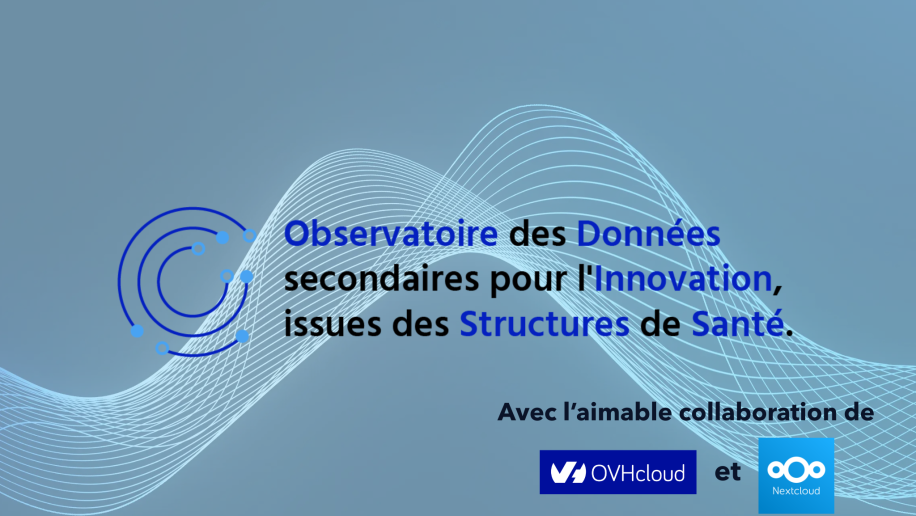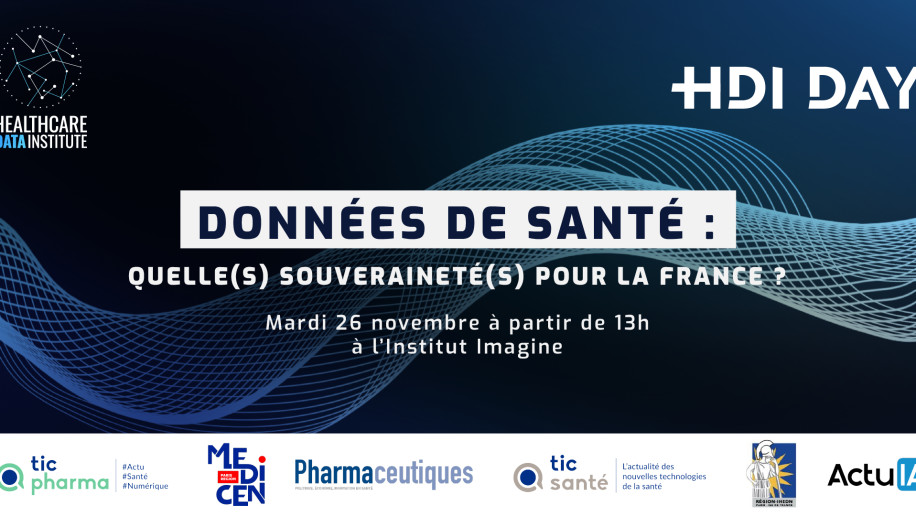More and more people are choosing to take charge of their health by modifying their diet and lifestyle. Awareness in healthy eating is increasing, while the recent surge in health technologies facilitates the active and passive recording of health parameters in real time. Nutrition science, which aims to understand the relationship between food, eating, social factors, dietary concerns and health, makes no exception and continues to evolve along with the modernization of technology and healthcare services.
Thanks to an easier access to technologies and data acquisition methods (including smartphone applications and sensors), new data sources need to be considered in nutrition research in the era of Omics and Big Data. Being more objective and used along with conventional clinical and biological parameters (e.g. individual composition of gut microbiome), they allow us to collect additional information on individuals and populations, and to answer additional scientific questions. Furthermore, by applying an analytical layer with advanced algorithms (Machine Learning, AI), we can offer personalized solutions to help people making healthier food choices [1]. However, can science be separated from the hype to identify practical opportunities in nutrition research to achieve and maintain healthy eating among individuals and populations?
Is technology ahead of nutrition research?
Nutritional measures are needed in research studies for various purposes: diet assessment may be needed in observational settings to generate information at population level [2] (i.e. nutritional epidemiology) and to explore diet/disease relationships in large samples of participants [3] (i.e. cohorts). It is also needed in interventional settings for the measurement of outcomes (when testing the efficacy of a solution on diet parameters) and collected throughout the conduct of a clinical trial when background diet may interfere with the effect of a tested intervention, whatever its nature (e.g. dietary, food, pharmaceutical, behavioral, or else) [4].
While nutrition studies are conducted according to harmonized referential [5][6], the heterogeneity in research objectives, designs and dietary assessment solutions prevent the use of an all-in-one tool for the acquisition and analysis of dietary data in clinical setting: Each dietary assessment method has strengths and limits and should only be used in relevant situations [7] especially when exploring diet-associated diseases [8]. There is however room for improvement: while clinical research tends to be more centered on the participant, the timeframe to deliver scientifically validated digital solutions for diet assessment, to be used by participant alone, can hardly keep up with the rapid pace imposed by technology [9]: on one hand, the number of available health-oriented mobile applications is skyrocketing, but they usually lack scientific validation [10]. On the other hand, existing validated methods to characterize the diet of individuals and populations are not always suitable in the digital, crowdsourcing and patient-centered era. Key challenges therefore include the validation of available mobile solutions and/or the digitalization of existing scientifically validated solutions.
Opportunities for nutritional epidemiology and personalized nutrition
While dietary recommendations are based on assessment of populations, assessing dietary habits and health is not sufficient anymore: Among many parameters, each of us has a unique gut microbiome, metabolism, and physical activity profile, and nutrition can now be more personalized than ever [11]. However, setting up individual recommendation can only be achieved by reshaping standards for data management to ensure interoperability between systems and large sets of information.
Moreover, to provide personalized insights, we need real-life data along with estimates at population level, and digital is a new area to investigate. Indeed, the use of mobile technologies distributed worldwide is a way to gather data and provide personalized recommendations [12]. Smartphone is personal and mobile applications, when well designed, have a certain potential to capture personal habits while complying with data privacy regulations. Based on machine learning, data can be used to learn what would be the most appropriate healthy choices based on individual behavior and our knowledge in nutrition.
The use of additional data sources for complementary analyses
Another challenge is to capture the most reliable data for specific research purposes. Internet of Things (IoTs) and biosensors have this ambition. As an example, validated scales for physical activity require participants to answer questions such as “During the last 7 days, on how many days did you walk for at least 10 minutes” [13] while IoTs are capturing thousands of data points per second to prospectively track each step at any time. Subjectivity is replaced by objectivity and, when validated, represents a reliable source of data for a spectrum of health parameters which is getting larger every day.
Just like any epidemiological study, large samples of participants are needed to characterize individual and population diet and understand its association with health parameters. Online conversations, like posts from social media, are now analyzed as complementary source of data (and sometimes associated to clinical data) to identify and describe disease-related symptoms, and have shown potential in describing medication use [14] and adverse events [15]. Our current challenge is now to learn how to leverage this data to also characterize social media users’ diet and understand its potential in exploring dietary behaviors, food-related symptoms and their relation with other health outcomes: It enlarges our possibility to scan social media to cluster users according to nutritional trends from multiple sources at a large scale, in an efficient way when analyzed in large data sets. We are now looking forward to addressing the current perspectives for the management of nutrition research studies within the Healthcare Data Institute and beyond.
References
- Zeevi D et al. Personalized Nutrition by Prediction of Glycemic Responses. Cell. 2015 Nov 19;163(5):1079-1094. doi: 10.1016/j.cell.2015.11.001
- Satija A, Yu E, Willett WC, Hu FB. Understanding nutritional epidemiology and its role in policy. Adv Nutr. 2015;6(1):5-18. Published 2015 Jan 7. doi:10.3945/an.114.007492
- Darnton-Hill I, Nishida C, James WP. A life course approach to diet, nutrition and the prevention of chronic diseases. Public Health Nutr. 2004 Feb;7(1A):101-21.
- Schäfer F, Jeanne JF. Evaluating the effects of food on health in a world of evolving operational challenges. Contemp Clin Trials Commun. 2018;12:51-54. Published 2018 Sep 16. doi:10.1016/j.conctc.2018.09.001
- Schmitt JA, Bouzamondo H, Brighenti F, Kies AK, Macdonald I, Pfeiffer AF, Chiodini A. The application of good clinical practice in nutrition research. Eur J Clin Nutr. 2012 Dec;66(12):1280-1. doi: 10.1038/ejcn.2012.132. PMID: 23211654
- WHO – The Importance of Pharmacovigilance – Safety Monitoring of Medicinal Products, Chapter 4 (2002) http://apps.who.int/medicinedocs/en/d/Js4893e/5.html
- Food and Agriculture Organization of the United Nations. Dietary Assessment : A resource guide to method selection and application in low resource settings http://www.fao.org/3/i9940en/I9940EN.pdf
- Archer E, Lavie CJ, Hill JO. The Failure to Measure Dietary Intake Engendered a Fictional Discourse on Diet-Disease Relations. Front Nutr. 2018 Nov 13;5:105. doi: 10.3389/fnut.2018.00105. eCollection 2018
- West JH, Belvedere LM, Andreasen R, Frandsen C, Hall PC, Crookston BT. Controlling Your “App”etite: How Diet and Nutrition-Related Mobile Apps Lead to Behavior Change. Eysenbach G, ed. JMIR mHealth and uHealth. 2017;5(7):e95. doi:10.2196/mhealth.7410.
- Van Velthoven MH, Smith J, Wells G, et al Digital health app development standards: a systematic review protocol BMJ Open 2018;8:e022969. doi: 10.1136/bmjopen-2018-022969
- Hamideh D, Arellano B, Topol EJ, Steinhubl SR. Your digital nutritionist. Lancet. 2019 Jan 5;393(10166):19. doi: 10.1016/S0140-6736(18)33170-2.
- Dennison L, Morrison L, Conway G, Yardley L. Opportunities and challenges for smartphone applications in supporting health behavior change: qualitative study. J Med Internet Res. 2013;15(4):e86. Published 2013 Apr 18. doi:10.2196/jmir.2583
- Craig CL, Marshall AL, Sjöström M, Bauman AE, Booth ML, Ainsworth BE, Pratt M, Ekelund U, Yngve A, Sallis JF, Oja P. International physical activity questionnaire: 12-country reliability and validity. Med Sci Sports Exerc. 2003 Aug;35(8):1381-95.
- Fagherazzi G, Ravaud P. Digital diabetes: Perspectives for diabetes prevention, management and research. Diabetes Metab. 2018 Sep 19. pii: S1262-3636(18)30171-X. doi: 10.1016/j.diabet.2018.08.012
- Kürzinger ML, Schück S, Texier N, Abdellaoui R, Faviez C, Pouget J, Zhang L, Tcherny-Lessenot S, Lin S, Juhaeri J. Web-Based Signal Detection Using Medical Forums Data in France: Comparative Analysis. J Med Internet Res 2018;20(11):e10466




